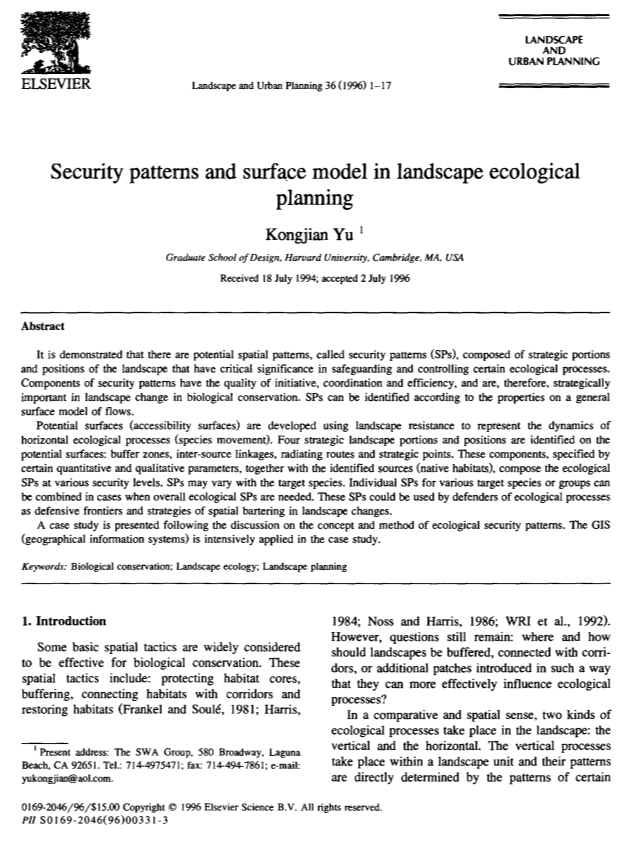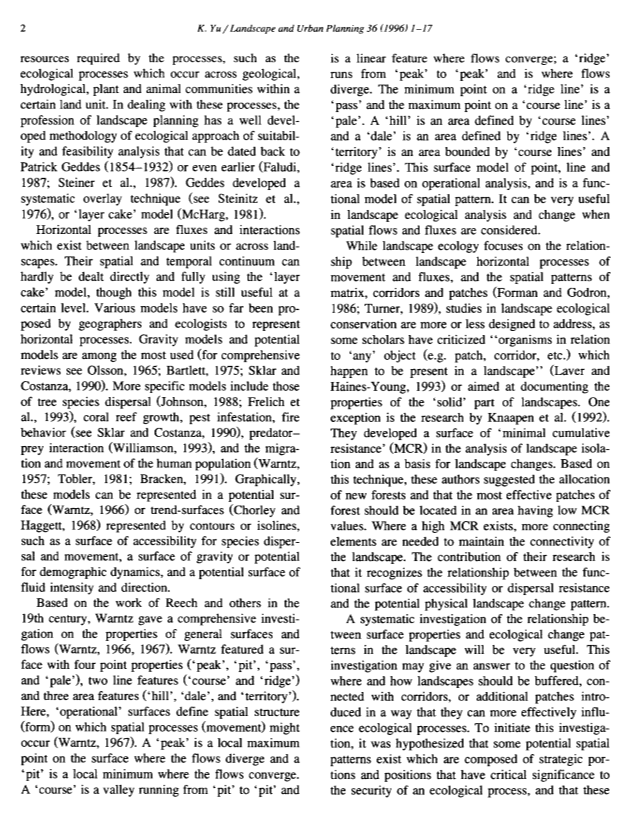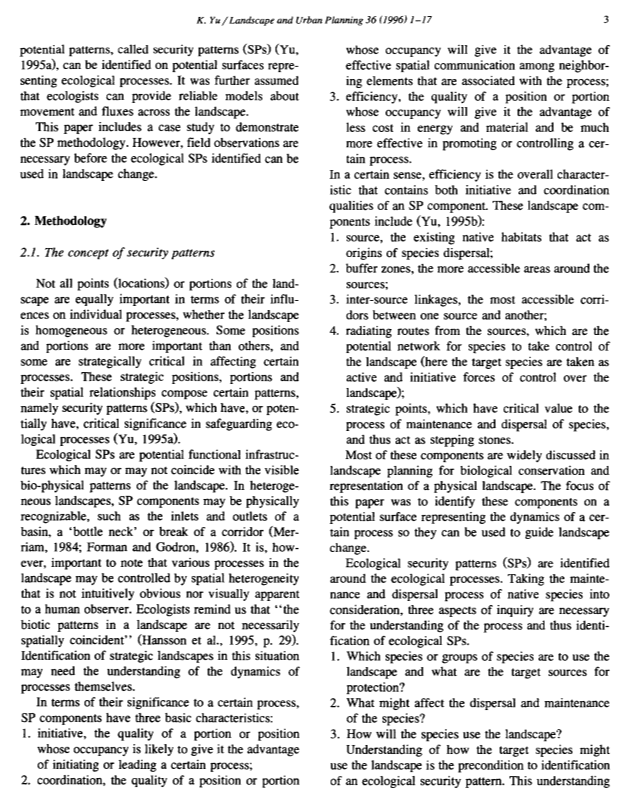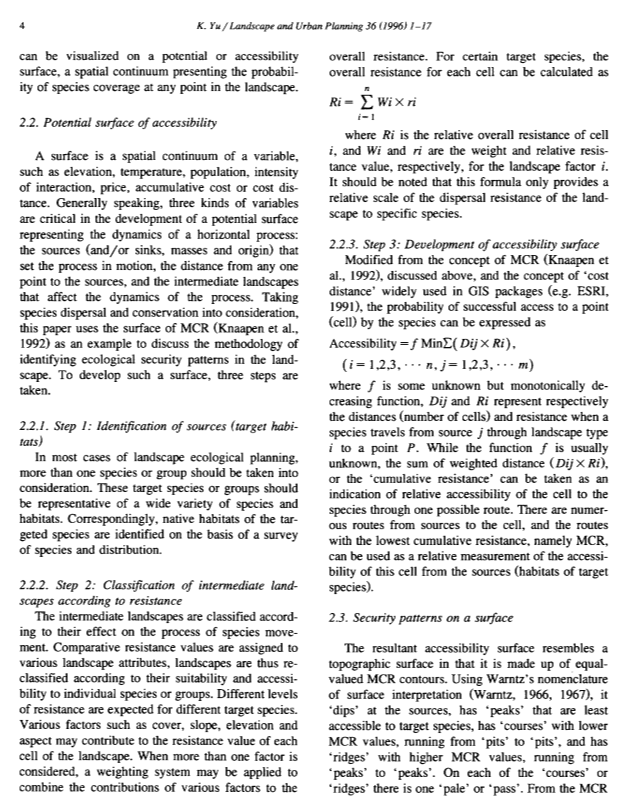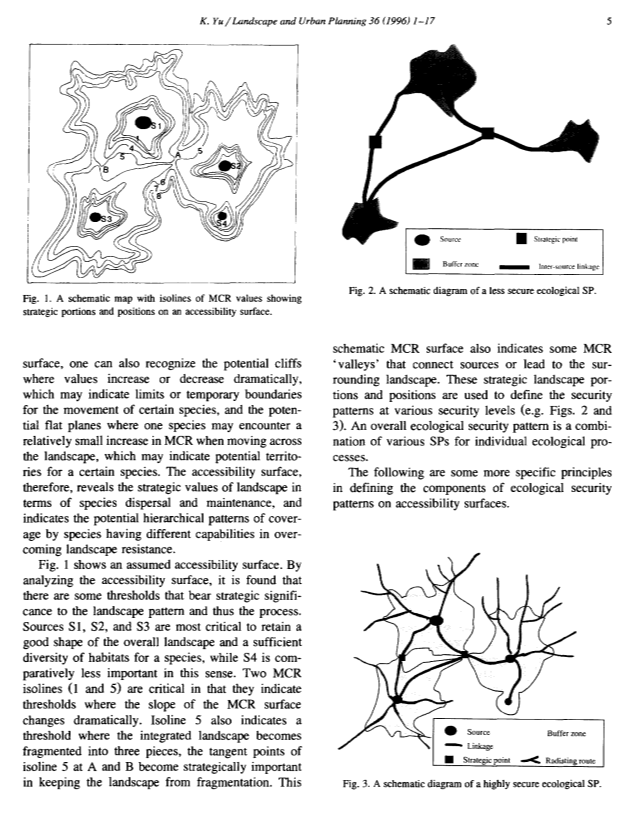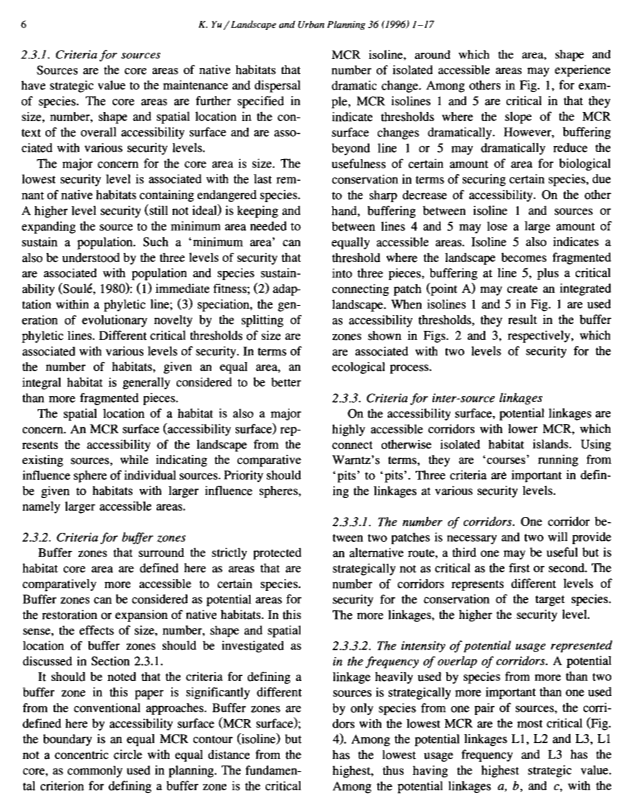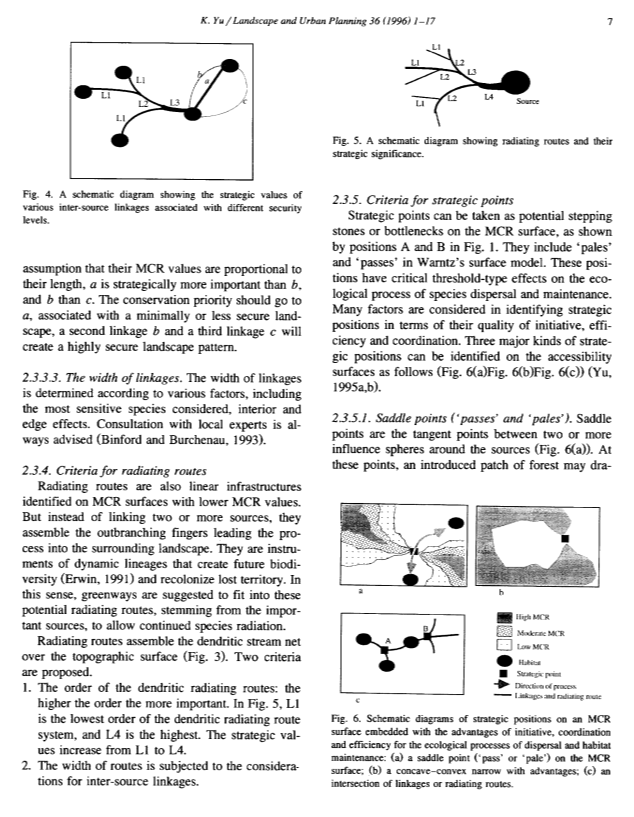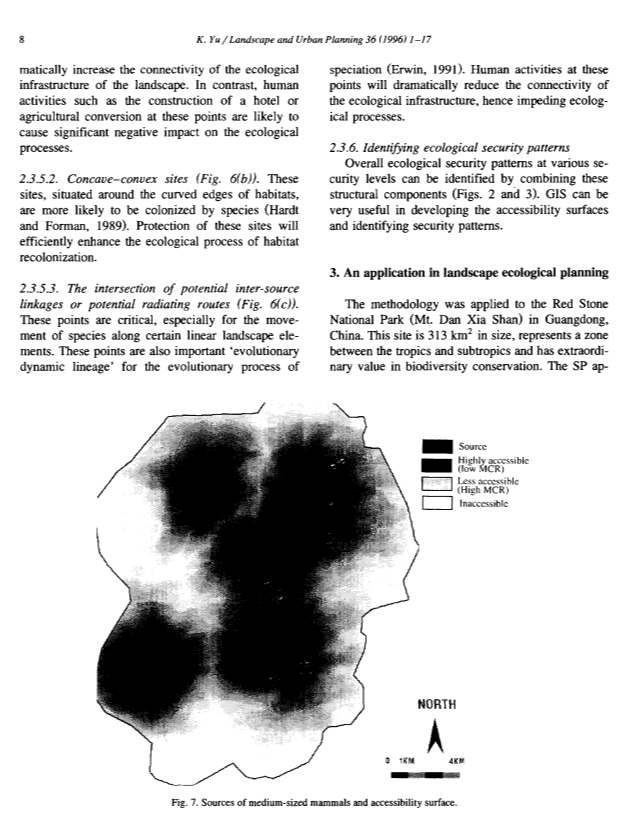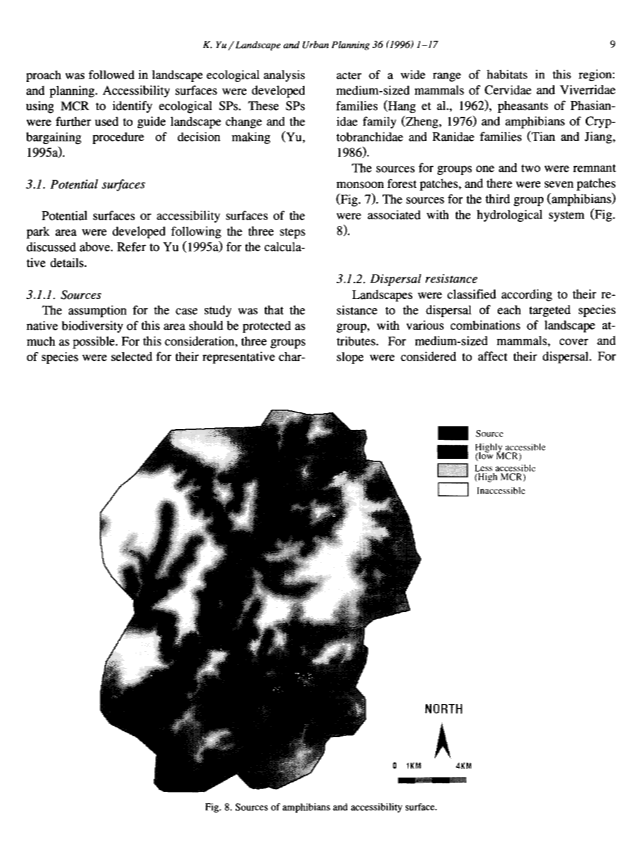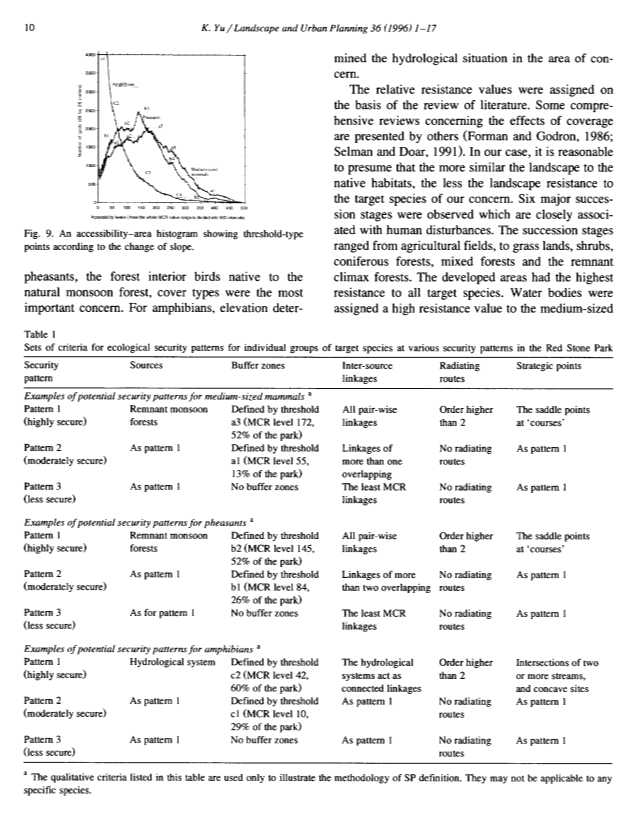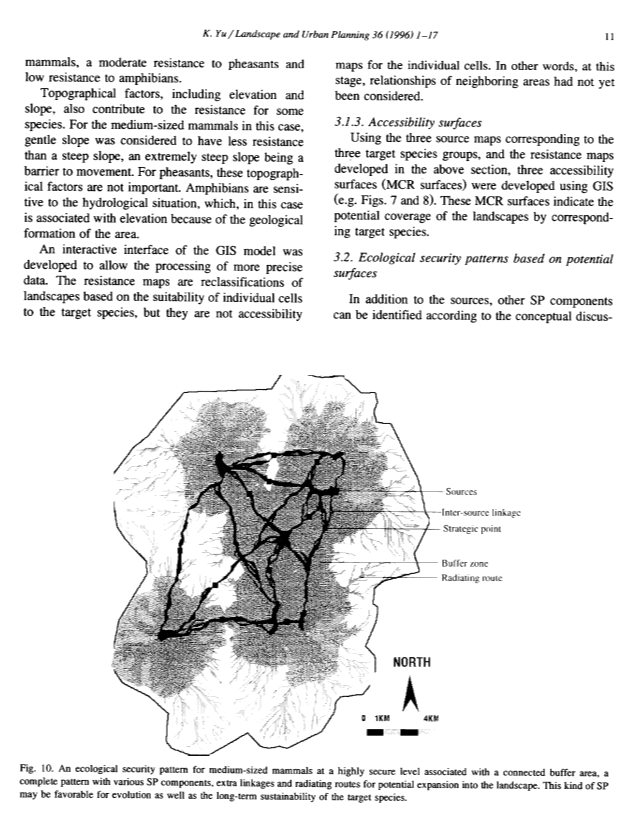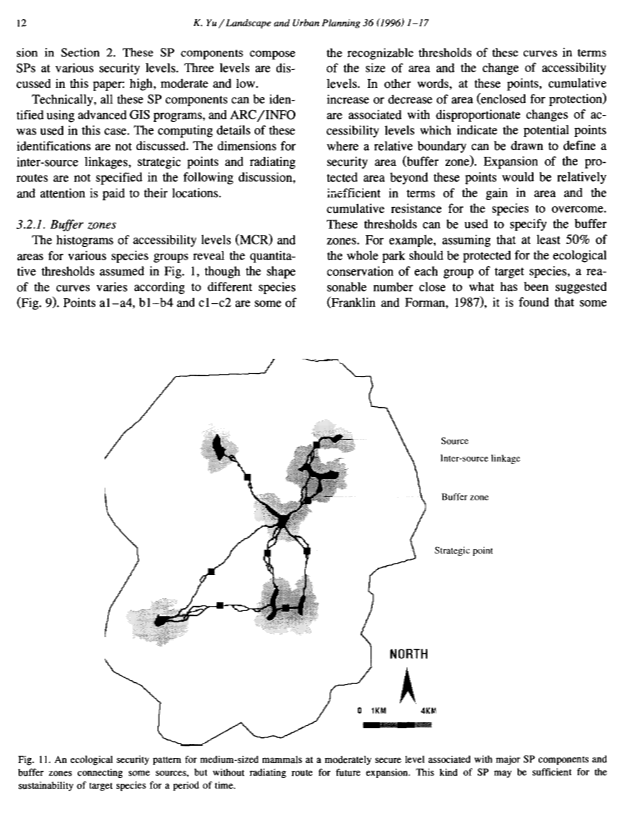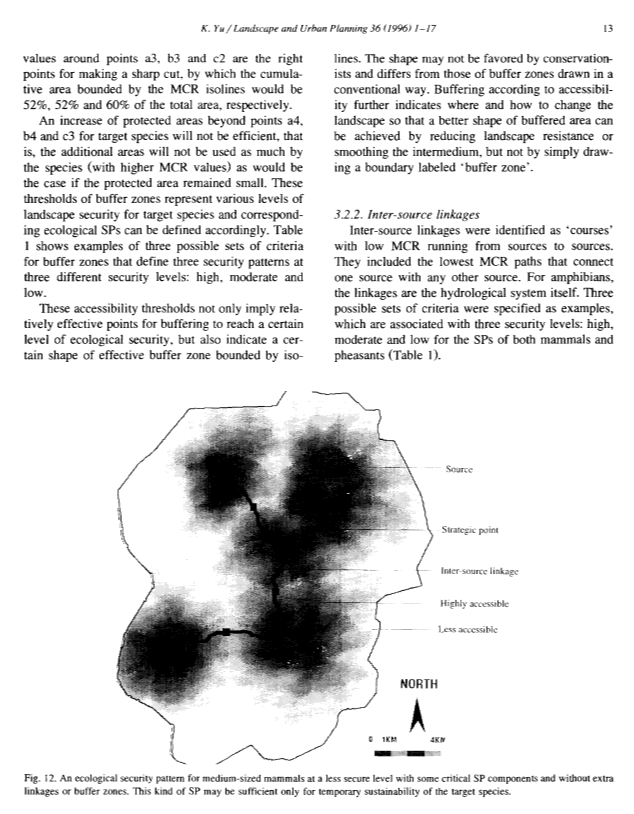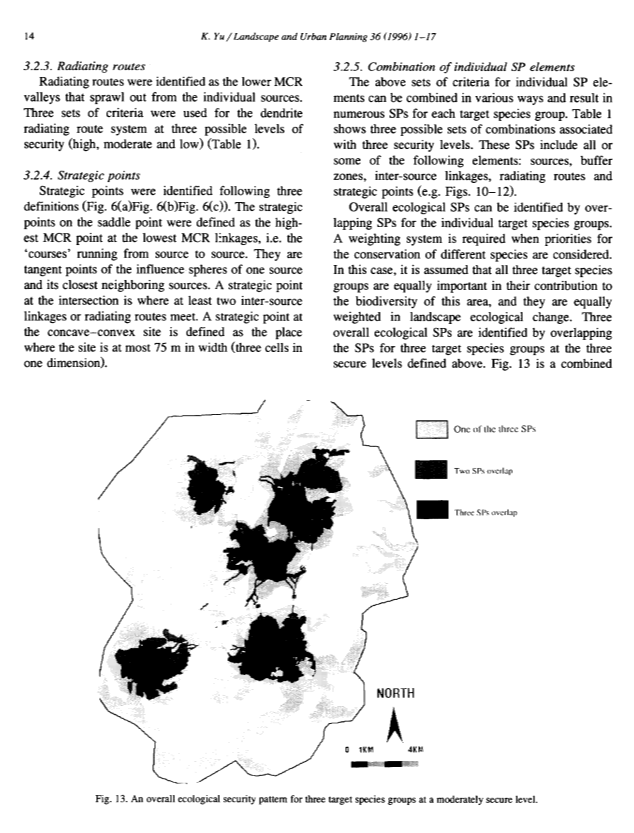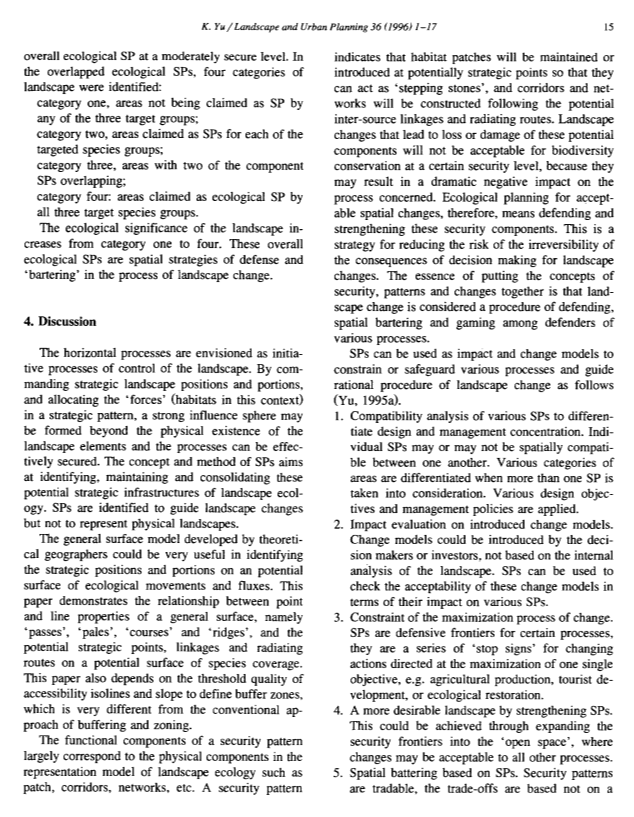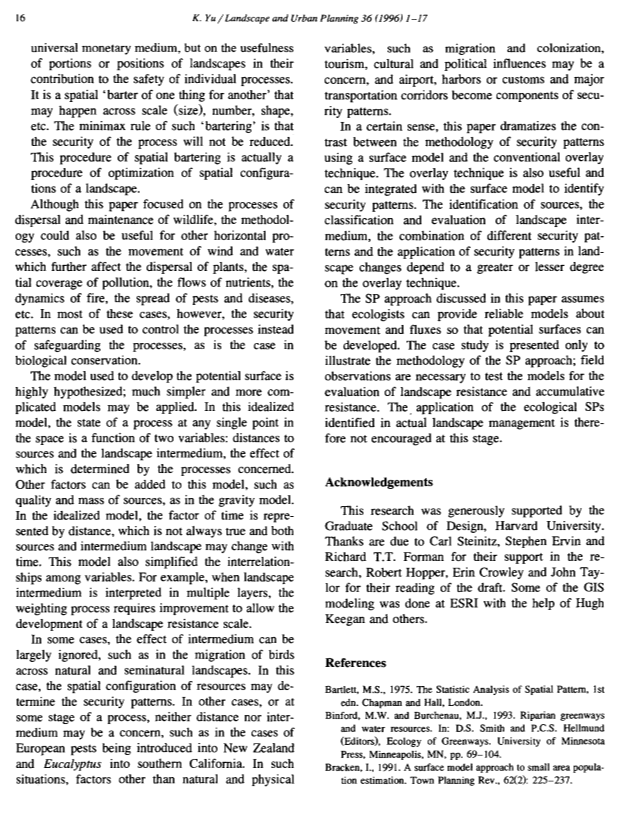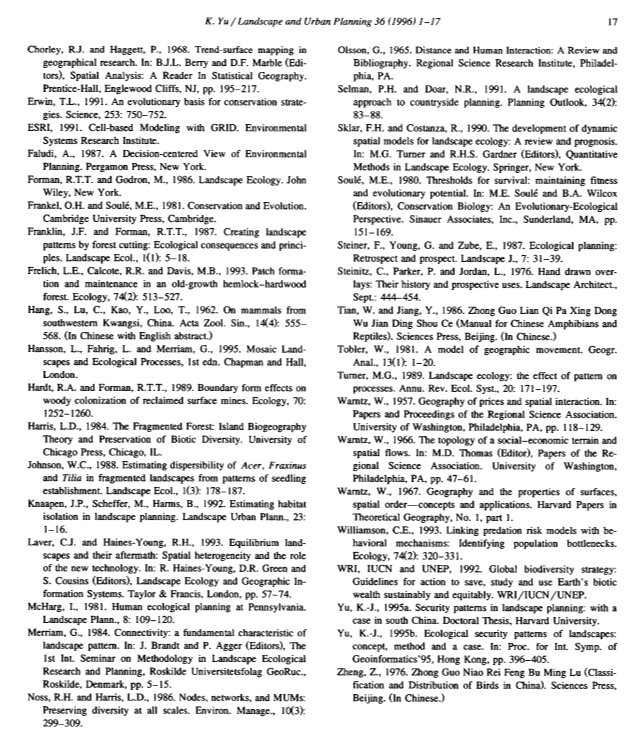Security patterns and surface model in landscape planning
- 摘要:
- It is demonstrated that there are potential spatial patterns,called security patterns(SPs),composed of strategic portions and positions of the landscape that have critical significancein safeguarding and controlling certain ecological processes. Components of security patterns have the quality of initiative,coordination and efficiency,and are,therefore,strategically important in landscape change in biological conservation. SPs can be identified according to the properties on a general surface model of flows. Potential surfaces (accessibility surfaces) are developed using landscape resistance to represent the dynamics of horizontal ecological processes (species movement). Four strategic landscape portions and positions are identified on the potential surfaces: buffer zones, inter-source linkages, radiatingroutes and strategic points. These components, specified by certain quantitative and qualitative parameters, together withthe identified sources (native habitats), compose the ecological SPs at various security levels. SPs may vary with the target species. Individual SPs for various target species or groups can be combined in cases when overall ecological SPs are needed. These SPs could be used by defenders of ecological processes as defensive frontiers and strategies ofspatial bartering in landscape changes. A case study is presented following the discussion on theconcept and method of ecological security pattems. The GIS (geographical information systems)is intensively applied in the case study.
文章来源:Kongjian Yu, Security patterns and surface model and in landscape planning[J].Landscape and Urban Plann. 1996;36(5)1~17.
